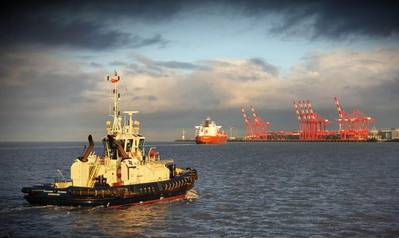Svitzer Slowing Down to Slash Emissions
A.P. Moller-Maersk's towage operator arm Svitzer on Thursday said it will limit vessel speeds across its entire tug fleet after a speed reduction pilot program led to considerable emissions reductions.
Svitzer's so-called Aim for 8 speed initiative—first trialed in the U.K. from late 2021—asks tug crews to navigate at a maximum speed of eight knots during mobilization and demobilization in an effort to reduce fuel burn and vessel emissions.
Svitzer said this speed target was chosen based on analysis of its tug fleet while crews were asked and incentivized to try to achieve the "sweet spot" of potential fuel efficiency when mobilizing to and from a job.
The effort is paying off, according to Kasper Karlsen, regional COO, Svitzer Europe, who said the program saved 1,000 tonnes of CO2 after less than a year of pilot implementation in the U.K.
Svitzer said it sees greater potential for speed optimization during mobilization and demobilization, compared to more operationally sensitive moments during a towage job, due to less power demand and more predictable conditions. For some individual tugs, optimized speed during mobilization and demobilization has improved efficiency by around 20%, the company said.
"We have been able to make this tangible impact at no cost to our operations and with very little disruption to our way of working, simply by asking our crews to make a small change in behavior and stay below eight knots before and after the towage job," Karlsen said. "We think that this is real proof of the impact that simple adjustments can make on the industry’s sustainability journey."
Svitzer, which aims to decarbonize its operations by 2040, said it will now begin implementing Aim for 8 across its global fleet of 400 vessels.
Meanwhile, Svitzer continues to pursue advances in tug design and future fuels that will help propel itself toward carbon neutrality.













